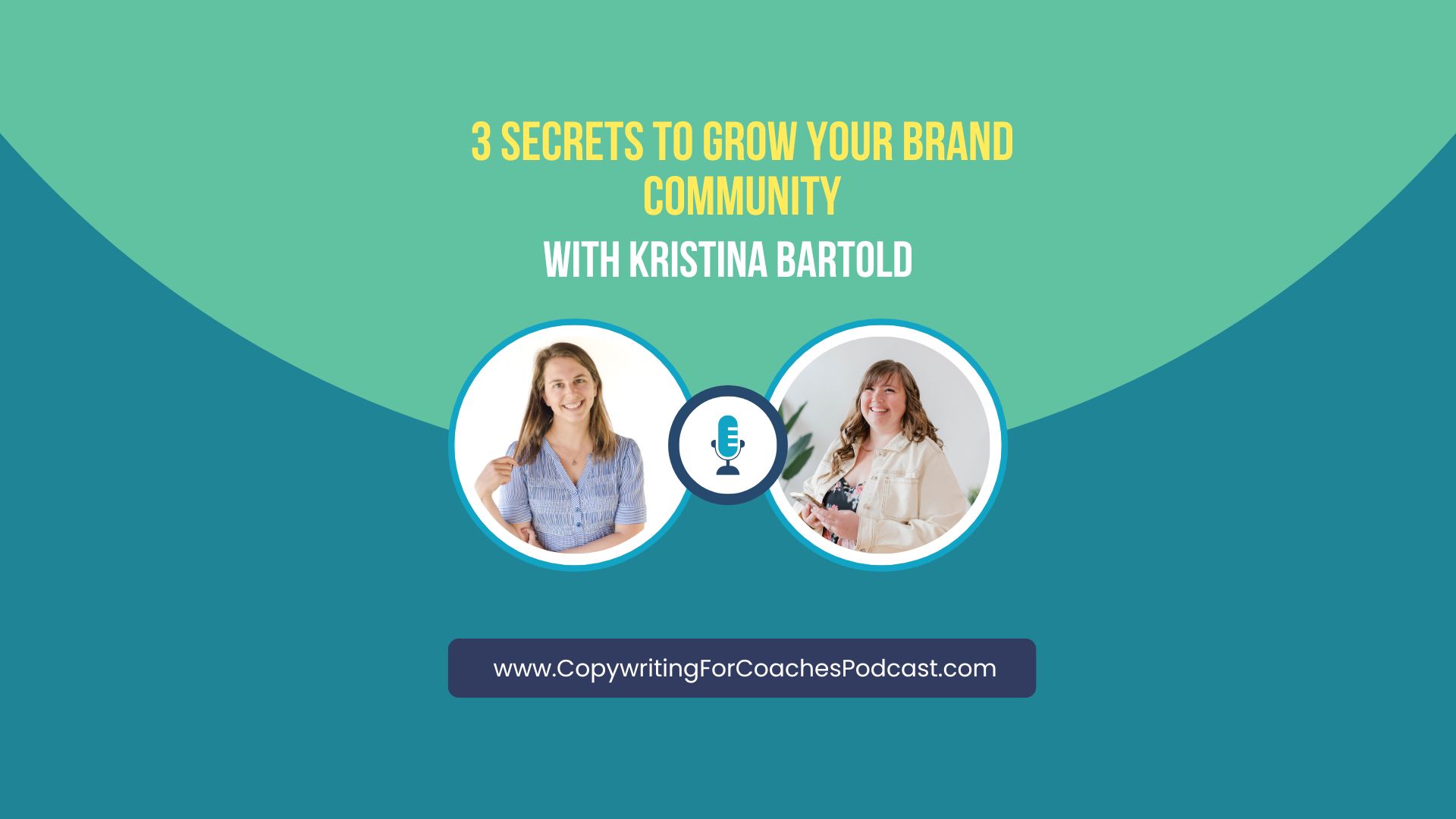Pain Point Marketing: Addressing Clients’ Needs Ethically In The Coaching Industry
Pain point marketing has long been a popular strategy employed by businesses to capture the attention of their target audience. But a growing number of business owners have expressed their concern with this approach. Instead of leaning into their client’s discomfort, they now crave a more compassionate approach by building relationships rooted in understanding and empathy.
In this blog, we’ll explore how we can redefine the power of pain points and take a new approach that fosters empathy and relatability, resulting in more positive impact and lasting connections that set ourselves apart.
What Does Pain Point Marketing Mean?
At its core, pain point marketing is a strategic approach that centers around the challenges, frustrations, and unmet needs of their target audience. By understanding and addressing these pain points, businesses aim to resonate with their customers on a deeper level, offer relevant solutions, and ultimately increase engagement and conversion.
The key to a positive pain point marketing approach is to accurately identify what the target audience’s pain points are. For a business, this includes research on existing frustrations and the impact it has on their productivity or other daily activities.
When customers recognize their own struggles within a marketing message, it becomes a powerful motivator to seek solutions to fix that problem, which drives their decision-making. Customers who experience these issues are more likely to feel a sense of urgency, making them more receptive to an offer of relief.
The possibility of overcoming a painful challenge in their lives encourages customers to make decisions aligned with their aspirations for improvement, which is why pain point marketing can be so effective.
Is Pain Point Marketing Ethical?
Ethics play a crucial role in any marketing strategy, and we want to make sure we navigate our communication with integrity. Pain point marketing can be a powerful tool, but it can also be easily misinterpreted if not done with care.
When pain point marketing is done unethically, it takes advantage of people’s vulnerabilities, fears, or insecurities to manipulate them into making a purchase. This exploits their emotions for profit, and can worsen their feelings of inadequacy or distress to individuals who are already dealing with sensitive issues.
Unethical pain point marketing ultimately hurts the business, too. You lose trust when customers realize they’ve been manipulated, which damages your brand’s reputation and leads to long-term negative effects on customer loyalty and perception.
In some cases, unethical pain point marketing can cross legal boundaries and lead to regulatory action or lawsuits.
Let’s look at the bigger picture, too. If a marketing campaign plays on societal prejudices or stereotypes, it can perpetuate harmful narratives and contribute to a negative social impact.
There may be a short-term gain, but it’s never worth it for the long-term losses. Unethical pain point marketing is a long-term loss for everyone involved: both the business and their audience.
Here’s how you can avoid manipulation and negative tactics in your marketing message:
Showcase your product or service: Reveal how your product/service can help alleviate pain points, but do not over exaggerate or overpromise. It’s important to remain transparent about the benefits and limitations in order to establish trust.
Transparency: Clients need to know what they’re signing up for. Offer an accurate picture of what the solution entails, including potential challenges and timeframes for achieving the results. Avoid promising overnight transformations. An ethical approach would be to name the time and effort required to get the positive outcome they’re looking for.
Avoid evoking fear: Leaning too much on fear, anxiety, and insecurity can ultimately push customers to make hasty decisions. This can potentially damage any trust that was built and reflect poorly on the brand. Instead, focus on moments of empowerment rather than compounding their fears.
Highlight positive outcomes: Frame marketing messages as opportunities for growth and improvement, ensuring that the client will feel supported and uplifted during their journey. Convey that their investment leads to the positive transformation they want to have.
By genuinely addressing pain points, offering realistic solutions, and avoiding manipulative tactics, a brand can show they understand, respect, and honestly care for the people they want to serve.
Why Does Pain Point Marketing Matter?
It’s important for marketers to maintain ethical standards by focusing on transparency, honesty, and providing real value to customers. Marketing that genuinely addresses customer needs and offers solutions without resorting to manipulative tactics is not only more sustainable but also more respectful of individuals’ well-being.
The bottom line is: pain point marketing works AND it can be done in a way that is not manipulative or exploitative.
This approach is still regularly used because of its effectiveness. Consider how human psychology plays a role in customer behavior.
When individuals recognize their pain being acknowledged, a powerful emotional connection is established. Not only does the brand understand the problem, but they also empathize with their emotions. This creates a bridge between the brand and its target audience. It’s more than just selling a product or service: the business is offering a solution that speaks to a core need.
Other benefits of pain point marketing include:
- A shared experience based on understanding and, when done right, empowerment
- Builds trust and confidence in the brand
- Nurtures brand loyalty
- Sets itself apart from other businesses in a similar field
When executed with sensitivity and authenticity, pain point marketing can be the catalyst for significant change.
How to Identify Pain Point Advertising
Understanding your audience’s pain points is one of the most essential steps to identifying who they are, what they need, and how you can serve them well. Let’s explore some strategies to build a genuine connection based on real-time information:
Conduct Thorough Market Research
Always do your research before you begin putting together your marketing content. Market research provides you with a comprehensive understanding of your audience’s preferences, behaviors, and obstacles that get in the way of their success.
By examining market data, you can identify unmet needs that your solution fixes. This type of research ensures marketing messages are aligned with an audience’s actual experience.
Utilize Feedback, Keywords, and Social Media Insights
Existing customers are a goldmine of pain point information. Leverage client feedback to gather direct insights into what aspects of their experience they find particularly frustrating. Or conversely, what they find most exciting about the product.
You can also do some keyword research to see what people are really asking about the problem that you solve. What people google is much more telling than what they share on social media 😉
These methods of data collection do two key things:
1) Give you an accurate glimpse into what their pain points truly are (and in their own words).
2) Clients have the opportunity to voice their concerns openly without judgment from their peers.
Social media platforms are another great source for information. Look at discussions, comments, and reviews to identify any recurring themes or problems the clients frequently come across. Pay attention to the specific words they use. This will help shape the language you use in your own content.
Analyze Client Complaints and Common Challenges
Client complaints are never the highlight of anyone’s day, but it gives valuable information that sheds light on what the product or service needs to improve. By addressing these pain points head-on (and being transparent about proactive updates to the product/service based on customer feedback), you demonstrate your commitment to resolving clients’ concerns.
Pain Point Marketing Examples
The best way to understand a concept is through practical examples. Let’s take a look at some successful and ethical campaigns that resulted in meaningful connections and results.
Successful and Ethical Campaigns That Effectively Addressed Pain Points
Dove’s “Real Beauty” Campaign:
Rather than promote their products, Dove addressed how many women struggle with self-esteem and body image issues. They celebrated diverse body types and promoted self-acceptance, which struck a chord regarding societal beauty standards. Dove addressed a deeply rooted pain point and positioned themselves as a brand that cared deeply about their customers.
Apple “Get a Mac” Campaign
This is an iconic example of pain point marketing. Launched in the mid-2000s, this campaign was a series of commercials that used humor to highlight some challenges their target audience was experiencing with their PCs. Apple effectively used relatable pain points such as frequent crashes, an abundance of viruses, and disruptive system updates without mocking their competition. Apple focused on empathy, addressing these common pain points, and positioned their product as a smoother, more reliable alternative.
Always’ “Like A Girl” Campaign:
Launched in 2014, this company sought to challenge the negative connotations associated with the phrase “like a girl” and empower young girls to embrace their confidence and strength. The campaign aimed to tackle the drop in self-esteem that girls often experience during puberty, as documented by research. It resonated with both women who could remember times they were told they did something “like a girl” and with younger girls who were inspired to redefine the phrase.
By empathetically understanding and addressing these challenges, these industries create spaces where individuals feel heard, supported, and empowered to make positive changes in their lives. They adeptly pinpoint their audiences’ concerns and align their offerings to resolve them, thereby establishing trust and delivering valuable solutions.
Pain Points in the Coaching Industry
Recognizing and addressing coaching pain points can help create more effective and impactful experiences. By acknowledging the specific challenges and obstacles that individuals face on their coaching journey, coaches can tailor their guidance, strategies, and support to provide relevant solutions. This not only builds trust and rapport between the coach and the individual but also ensures that the coaching process is tailored to their unique needs, leading to more meaningful and transformative outcomes.
Let’s explore how coaches can better address these in the coaching industry.
Common Challenges Faced by Coaching Clients
Coaching clients often find themselves struggling with self-improvement:
- The desire for clarity: People who are interested in hiring a coach struggle with uncertainty about their life goals, career path, or strategy to get to the next level. They hope to find a coach that can help them gain clarity on the vision they hold for themselves, personally and professionally.
- Lack of confidence and self-esteem. Another challenge coaching clients face is with their self-doubt. This often comes from negative self-perception which directly impacts their ability to take risks or pursue their goals.
- Better work-life balance: With an increasing amount of people prioritizing a healthy work-life balance, clients want to be in position to successfully juggle their professional and personal responsibilities, avoiding more instances of burnout and stress.
- Improved communication: Clients tend to seek coaches who can help them improve their ability to express themselves clearly at home or in the workplace.
How to Find Client Pain Points for Market Research
Discovering pain points involves strategic data collection. And it might be easier than you think. Here’s what you can do to get started.
Strategies for Collecting Data on Client Pain Points
Formal and informal feedback. You can create surveys that ask clients about their experiences, what brought them to you, and what they’re hoping to achieve after your work together is finished. Incorporating feedback as a regular part of your program will increase completion rates (rather than giving them another thing to do in their already busy lives). Regularly collecting this data as part of your workflow can help continually shape your offer.
Pay attention to social media. Whether it’s Facebook groups, Instagram reels, or LinkedIn posts, listen to what your ideal customer is talking about. What are some of the trends, and what can you do to solve this?
Customer support interactions. These conversations, and especially reviews, can give you insights into the most commonly asked questions relevant to a client’s pain points.
Review your competition. Who would you say are your competitors? What do they do that’s successful? What are people saying about their offer? Do you see any gaps that your solution can fill?
Use Personas and Customer Journey Mapping to Uncover Pain Points
Another great way to find your audience’s pain points is to use personas and map out your customer’s journey. Try this:
Create a persona of your ideal client. The best to do this is to develop a detailed profile that represents the different customers that come your way, which includes details like:
- Likes/dislikes
- Desires
- What motivates them
- Challenges
- Fears
- What embarrasses them
The more descriptive you are—the more tangible this person feels—the better your persona will be.
Then, plot out your customer’s journey. Think about your audience. Are they aware they have a problem? Do they know they need a solution but don’t know what that looks like yet? What needs to happen in order for them to make that final decision? You’ll need to identify the pain points for each stage of the customer journey:
- Awareness
- Consideration
- Purchase
For example, a health coach wasn’t getting much traction talking about gut health (the solution). However, when she started talking about bloating and constipation (the problem), then leads started pouring in! This means that her audience was problem-aware, but not solution-aware.
Personas and customer journey mapping allow you to step into your customer’s shoes and experience their challenges firsthand.
Ways to Use Pain Points in Digital Marketing with a Positive Approach
In this section, let’s explore the power of empathy and authentic messaging in the online coaching world.
Crafting Empathetic and Relatable Messaging
Positive pain point marketing starts with empathy. It’s less about pushing them out of fear and more about using emotional language that helps them see a version of themselves whose life is greatly improved after your solution.
Write Headlines That Capture Attention and Empathy
An attention-grabbing headline can stop the endless scroll. In a digital world full of distractions, headlines that connect on an emotional level will help capture attention.
Incorporate Testimonials and Success Stories
Social proof is one of the best ways to provide reassurance and authenticity. When your ideal customer sees that others with similar issues have made a real transformation, they’re more likely to feel connected to your brand and offer.
Using Storytelling to Connect With Customers’ Emotions
Stories have the capability to evoke powerful emotions, especially when the narrative touches on vulnerable aspects of life. These stories humanize the brand, creating a deeper emotional connection.
Align Pain Point Solutions with Your Product or Service
Effective marketing means connecting your offer with your customers’ needs and showcasing the unique value you bring.
Identify the features that directly tackle customer challenges and match them with relevant product attributes. Communicate the benefits clearly and highlight how features solve problems and provide potential transformations.
Here are some examples of features, benefits, and potential transformations for business coaches, life coaches, and health/wellness coaches:
Business Coach:
Feature: Strategic Planning Sessions
Benefit: Gain clarity on business goals, objectives, and a roadmap for growth.
Transformation: Transform your business into a well-organized, goal-oriented venture, achieving sustainable success.
Feature: Performance Analytics Tools
Benefit: Track and measure key performance indicators for informed decision-making.
Transformation: Transform your business by leveraging data-driven insights, optimizing strategies for increased efficiency and profitability.
Feature: Personalized Growth Strategies
Benefit: Tailored strategies addressing unique business challenges.
Transformation: Transform your business by overcoming specific hurdles, achieving targeted growth milestones.
Life Coach:
Feature: Personalized Goal Setting
Benefit: Define and work towards personalized life goals.
Transformation: Transform your life by breaking barriers, achieving aspirations, and fostering a sense of fulfillment.
Feature: Mindfulness and Stress-Reduction Techniques
Benefit: Learn techniques to manage stress and promote mental well-being.
Transformation: Transform your life by cultivating resilience, inner peace, and a positive mindset.
Feature: Empowerment Coaching
Benefit: Guidance to unlock your potential and take charge of your life.
Transformation: Transform your life by gaining confidence, clarity, and the ability to navigate life’s challenges with resilience.
Health and Wellness Coach:
Feature: Personalized Nutrition Plans
Benefit: Receive a customized nutrition plan based on individual needs.
Transformation: Transform your health by adopting sustainable dietary habits, leading to increased energy and overall well-being.
Feature: Fitness Routines Tailored to Individual Goals
Benefit: Access workout routines aligned with personal health objectives.
Transformation: Transform your health by achieving fitness milestones, enhancing physical strength, and promoting a healthy lifestyle.
Feature: Holistic Health Assessments
Benefit: Comprehensive health evaluations for personalized wellness strategies.
Transformation: Transform your health by addressing holistic well-being, integrating physical, mental, and emotional aspects for overall vitality.
By aligning the features of your offers with the specific needs of your ideal clients, you can effectively communicate how your services address challenges and contribute to their desired transformation.
The Role of Empathy in Pain Point Marketing and Successful Implementation
Empathy shows you’re not just selling, you’re relating.
By stepping into your customers’ shoes, you become a guide, saying, “I get it, and I’m here to help.” This isn’t just marketing; it’s building a bond based on genuine care and solutions.
Customers want authentic connections and value-driven interactions. Redefining pain point marketing is becoming increasingly more important. Rather than using pain points to manipulate or worsen someone’s feelings, we can express understanding, offer solutions, and ultimately make a positive impact.
We can create marketing that is not only effective but also compassionate, relatable, and genuine—one that is aligned with your personal values as well as your customers’.
Audit Your Funnel for Positive Pain Points
Now that you understand pain point marketing and examples of typical coaching pain points, it’s time to audit your own marketing to put this into practice and see how your client retention will increase!
Grab my free 3M Funnel Audit to make it easy to know exactly what to do next in your digital marketing.




